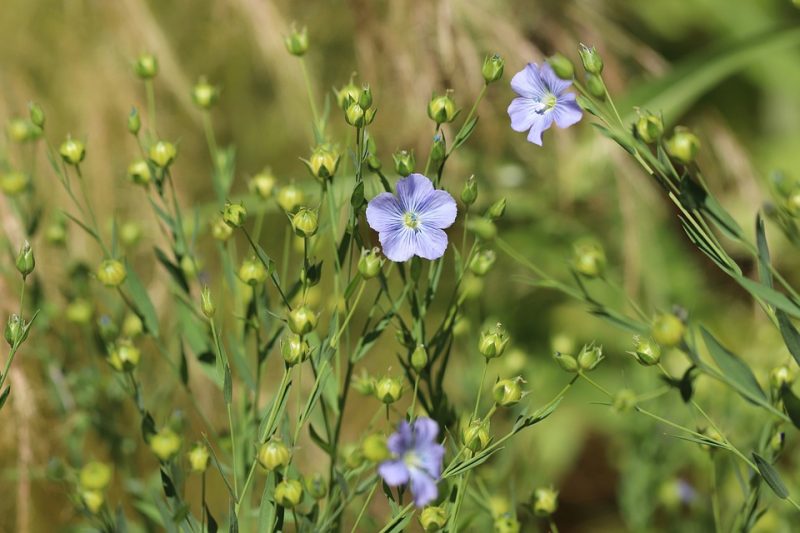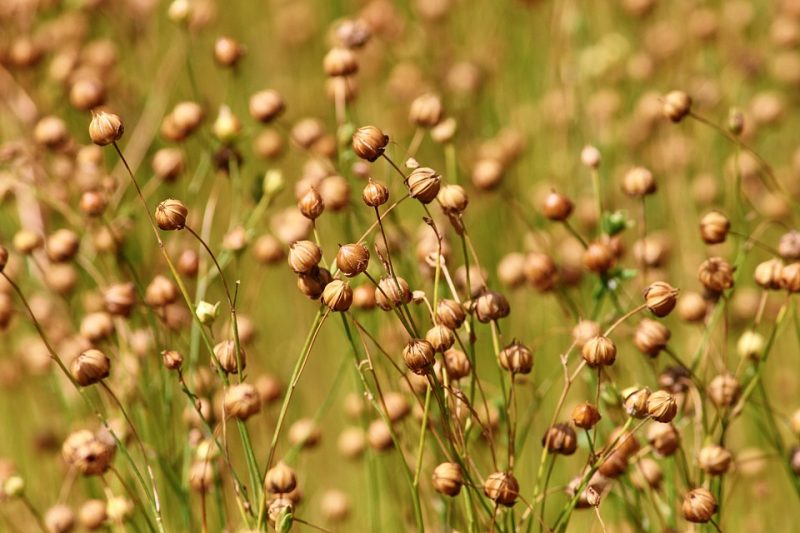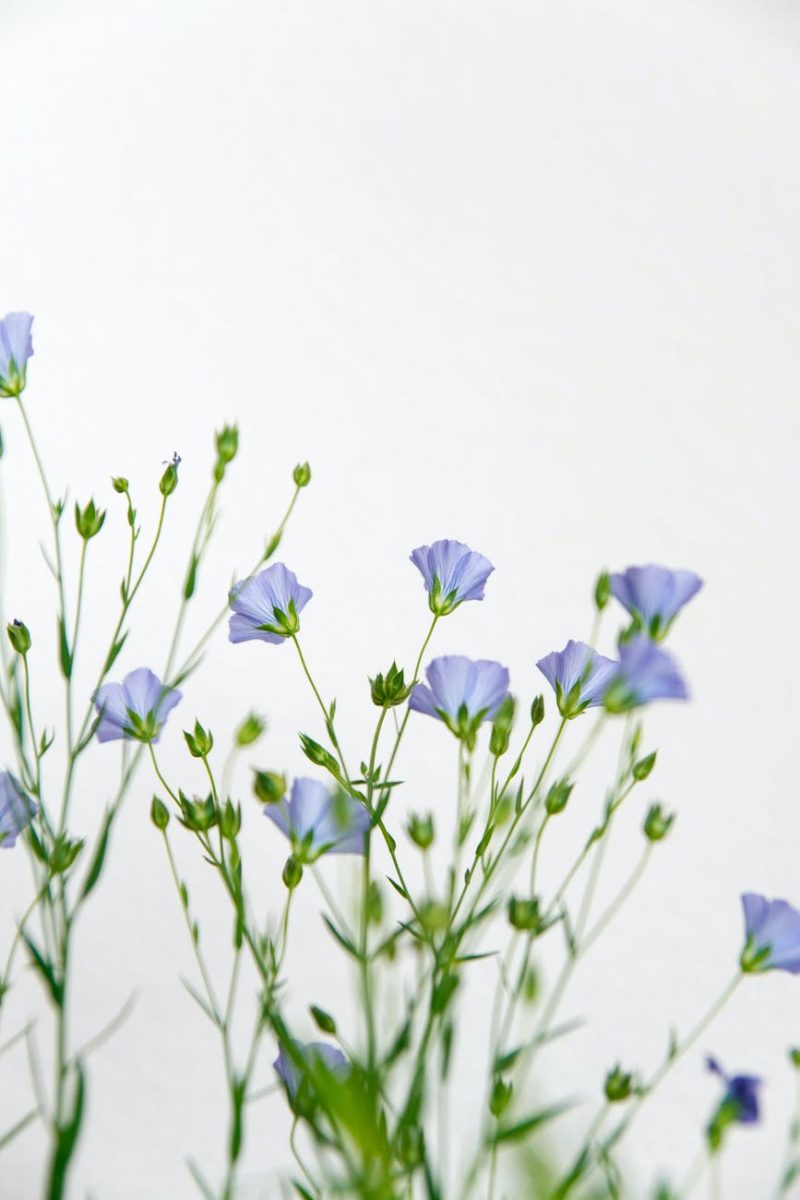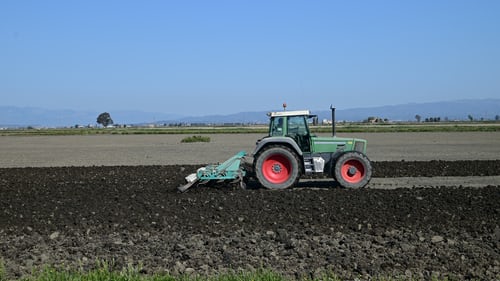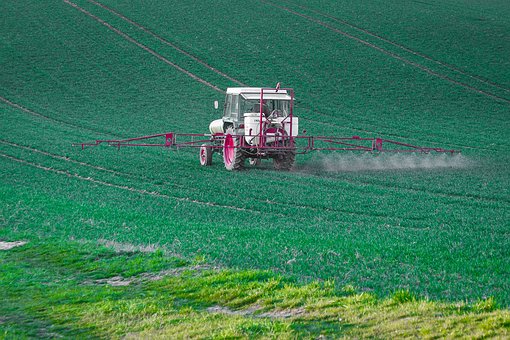Flax for oil, cultivation and harvesting technology
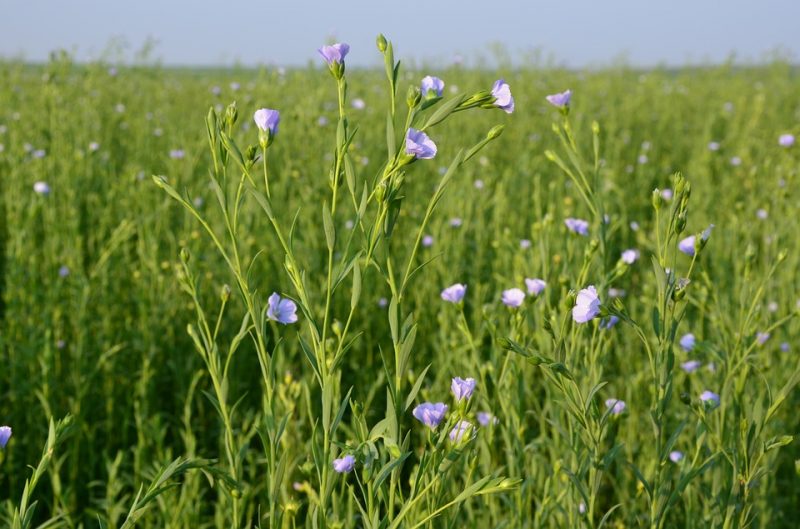
Flax (Linum usitatissimum) is a species of annual herbaceous plant, belonging to the botanical family Linaceae, genus Linum. Flax for oil is used in the paint and ink industry, but also in the manufacture of oilcloth and linoleum. The vegetable matter left after pressing the oil (press cakes) is used for animal feed. In addition, flax for oil has a special medicinal and therapeutic importance, and the stems can be used in the stationery and textile industry.
Flax for oil is cultivated globally for its oilseeds, with a high oil content. The largest flax crops are found in India and China, followed by Canada and Russia.
Botanical characteristics
It has an erect and branched stem, which is up to approx. 60 cm high. In cool years, with high humidity conditions, the stems are usually longer. The leaves are elongated, small in size. The flowers are white or blue, rarely pink or purple, clustered in cyme inflorescences. After flowering, the 5-lobed capsule-type fruits appear, which have 2-10 glossy, compressed, yellowish or brownish seeds inside.
Varieties
Among the varieties of flax for oil, we mention: Gentiana, Olin, Iulia, Adin and Janina. We also mention mixed flax, in which both the seeds and the stalks and flax fibers are used.
Climate and soil requirements
Flax for oil is adapted to the climatic conditions of the forest-steppe area of some countries. The seeds germinate at positive temperatures between 1-4 ℃, and the optimal temperature for growth, development and flowering is between 16 and 22 ℃. The optimum annual precipitation is between 100 and 200 mm, and the highest seed harvests are recorded in years with a reduced number of rainy days. Regarding the soil, flax for oil prefers fertile, permeable, medium-textured soils.
Cultivation technology – flax for oil
Crop rotation and precursor species
The return of flax for oil on the same surface is recommended after 6-7 years. As preceding crops, species that are removed from the land early are recommended, such as cereal grasses and annual legumes. Potatoes or sugar beets can be good precursors only if their phytosanitary status was very good in all stages of development.
Land preparation
After the preceding crop is removed from the land (in autumn), stubble cultivation is next, followed by deep plowing (20-25 cm). Along with plowing, fertilizers containing phosphorus (45-50 kg/ha) and potassium are incorporated, if necessary. Then, it is recommended to carry out several works with the help of which the land is kept loose and levelled, until winter sets in. In spring, superficial works are carried out to prepare the seedbed, which must be well shredded, fine and lightly compacted. If necessary, nitrogen fertilizers (45-50 kg/ha) or complex fertilizers can be administered at this stage. In areas characterized by drought, it is recommended to weed the land before sowing, with specific herbicides, respectively incorporating them into the surface layer of the soil (3-4 cm).
Recommended products
-
You can find products on a different store
Change Store -
You can find products on a different store
Change Store -
You can find products on a different store
Change Store -
You can find products on a different store
Change Store -
You can find products on a different store
Change Store -
You can find products on a different store
Change Store -
You can find products on a different store
Change Store -
You can find products on a different store
Change Store -
You can find products on a different store
Change Store -
You can find products on a different store
Change Store -
You can find products on a different store
Change Store -
You can find products on a different store
Change Store -
You can find products on a different store
Change Store -
You can find products on a different store
Change Store -
You can find products on a different store
Change Store -
You can find products on a different store
Change Store -
You can find products on a different store
Change Store -
You can find products on a different store
Change Store -
You can find products on a different store
Change Store -
You can find products on a different store
Change Store -
You can find products on a different store
Change Store -
You can find products on a different store
Change Store -
You can find products on a different store
Change Store -
You can find products on a different store
Change Store
Sowing
Before sowing, it is recommended to treat the seeds against anthracnose and fusarium with specific products. Sowing is carried out early, when the soil temperature at the sowing depth is min. 5 ℃, for several consecutive days. The seed requirement is approx. 80-100 kg/ha, respectively approx. 800-1000 seeds/m2. Sowing is done at a depth of 2-3 cm, and the recommended distance between rows is 12.5 cm.
Maintenance works
Since the growth period of flax is short, and the absorption capacity of the roots is weak, fertilization should be done only when preparing the land. Direct fertilization with manure is only recommended in the pre-emergent period, if necessary.
Thus, the maintenance works consist in controlling weeds through herbicides, respectively controlling pests and diseases.
Herbicides are applied before sowing for monocotyledonous and some dicotyledonous weeds, respectively during the vegetative growth period for dicotyledonous weeds, but no later than the period when the flax is approx. 15 cm high. Homologated herbicides are used for flax cultivation. Specific herbicides are used to combat cane, which are applied when the cane is 10-20 cm high.
Recommended products
-
You can find products on a different store
Change Store -
You can find products on a different store
Change Store -
You can find products on a different store
Change Store -
You can find products on a different store
Change Store -
You can find products on a different store
Change Store -
You can find products on a different store
Change Store -
You can find products on a different store
Change Store -
You can find products on a different store
Change Store -
You can find products on a different store
Change Store -
You can find products on a different store
Change Store -
You can find products on a different store
Change Store -
You can find products on a different store
Change Store -
You can find products on a different store
Change Store -
You can find products on a different store
Change Store -
You can find products on a different store
Change Store -
You can find products on a different store
Change Store -
You can find products on a different store
Change Store -
You can find products on a different store
Change Store -
You can find products on a different store
Change Store -
You can find products on a different store
Change Store -
You can find products on a different store
Change Store -
You can find products on a different store
Change Store -
You can find products on a different store
Change Store -
You can find products on a different store
Change Store
Among the pests that cause significant damage in the flax crop, we mention the thrips (Thrips linarius), which cause damage to the leaves and stems (visible through twisting deformations), respectively the flea beetle (Aphthona euphorbiae), which causes damage from sprouting to the end of the cotyledon phase. In the case of an infestation with the flea beetle, the entire crop can be compromised in just a few days. It is recommended to apply specific treatments, with insecticides approved for this crop.
Among the diseases frequently encountered in flax crops, greater caution must be paid to the prevention and control of rots and damping-off (Rhizoctonia solani, Pythium sp. etc.), flax anthracnose (ex. Colletotrichum lini), rusts (ex. Melampsora lini), Septoria (e.g. Mycosphaerella linicola) and fusarium wilt (e.g. Fusarium oxysporum). Prevention is achieved by ensuring adequate environmental and care conditions, and specific fungicides are used to control them.
Harvesting
It is done with special machines (combines for modified cereals), when the flax has reached maturity (yellow-late maturity phase), and the capsules have turned brown in proportion of approx. 80-90%. The stems can be baled and used. If the stalks are long and can be used at the smelters, they are harvested by pulling, with special combines, after the capsules have been harvested by stationary threshing.
In the environmental conditions of countries with a temperate climate, seed production ranges between 1000-1500 kg/ha.
